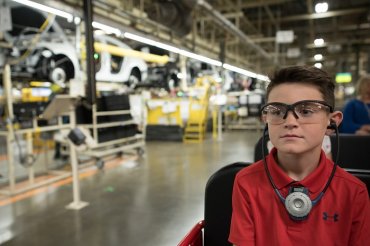
Ask a high school senior or soon-to-be college graduate about the career they intend to pursue, and its likely that lubricant manufacturing will not be at the top of the list. Faced with an aging workforce and a potential skills shortage, some companies have taken the initiative to make lube production an attractive profession for young workers.
The United States Bureau of Labor Statistics estimated the total U.S. workforce at roughly 156 million workers in 2018. Of these, the cohort of younger workers aged 20 to 34 years old (which includes millennials) made up 49.4 million workers or 32 percent of the total workforce.
In comparison, workers ages 35 to 64 made up the majority of the manufacturing workforce in the U.S. in 2018, at around 10.2 million workers. About 3.8 million younger workers aged 20 to 34 years old were employed by manufacturing companies, roughly a quarter of the manufacturing workforce, according to data from the Manufacturing Institute, the advocacy arm of the National Association of Manufacturers.
Industries across the U.S. have reported difficulty in finding skilled workers, NAM noted. The organization conducted a survey of 539 small to large manufacturers in the fourth quarter of 2018 and found that roughly 68 percent of respondents named the inability to attract and retain workers as their primary business challenge.
In addition, 77 percent of respondents reported that their companies had positions they were struggling to fill, and nearly 29 percent said they were unable to take on new business and experienced loss of revenue opportunities due to workforce constraints.
Retirement of baby boomers is one of the main reasons positions are opening up in manufacturing and leading to a skills shortage, according to the Manufacturing Institutes 2018 Skills Gap in Manufacturing Report, behind introduction of new technologies/automation and negative perceptions from students and their parents of the manufacturing industry.
The Manufacturing Institute projected that 2.69 million jobs in manufacturing will open over the next decade due to workers retiring compared to 1.96 million new jobs generated from business growth, but estimated that 2.4 million jobs will go unfilled in that timeframe.
Filling a Void
Retirements seem to be looming especially close for lubricant companies, as three sources in the industry pointed out to Lube Report.
Workers across various industries have delayed retirement for reasons that range from companies doing away with pension plans (forcing people to work longer to have savings) to the availability of company-provided health insurance, noted Curt Knapp, chief operating officer of sales and supply at Omaha, Nebraska-based Warren Distribution.
“I think it does talk to the aging of our workforce that more and more people are getting to that point [of retirement],” said Knapp. He added that Warren Distribution has had eight retirements since March 2018, with three of the retirees having more than 27 years of experience at the private-label distributor.
Retirements are also on the mind of Jeremy Henry, director of operations at aftermarket automotive maintenance supplier BG Products in Wichita, Kansas. Henry anticipated that between 10 and 12 percent of the operations workforce of BG Products will retire in the next three to five years.
He said the company has worked on lining up people from its current workforce for promotions so that when retirements occur, there isn’t a vacuum.
Building Interest in Manufacturing
Making a career in the lubricants industry appealing for younger workers is a challenge that both Warren Distribution and BG Products have taken steps to address.
In Wichita, for example, aircraft parts manufacturing is significant competition for BG Products. Henry mentioned the need to increase the appeal of lube manufacturing, which is an industry that in his opinion requires a long-term investment and doesn’t offer the immediate rewards that younger generations tend to favor.
To communicate what a career in manufacturing could look like, Henry said that BG Products has begun an informal initiative to reach out to high schools and community colleges in the area. He said he is proposing that the company provide part-time work to high school students to expose them to manufacturing.
Warren Distribution has taken a similar initiative of outreach to educational institutions by partnering with local organizations to approach the student population at high schools, trade schools, community colleges and even grade schools. Knapp said this is a way to create awareness and give students the tools to make a more informed decision when they are deciding what to do after graduation.
“We tend to have really good retention, so that puts a little less strain on the hiring engine,” Knapp said. But you always need to replenish the ranks. Theres always going to be some attrition at the shop floor level. “I don’t think in our industry you ever have enough trade to do electric and maintenance work, so were always looking for people to get started on those tracks.”
Additionally, the distributor revamped its careers website within the past year to include company history, job postings by area, statements from current employees and video testimonials from staff across different jobs. “[Video] is a medium, and its an approach that we think is the way that the younger people want to learn about things,” Knapp pointed out. “Also, they want authenticity. I think our videos come across as, These people are being authentic about their view on the job and their view on the company.”
Read the full story in the April issue of Lubes’n’Greasesonline at: https://secure.viewer.zmags.com/publication/6e64d92c#/6e64d92c/28